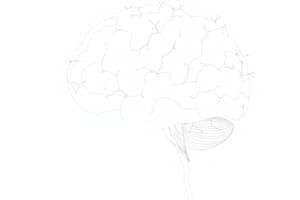Podcast
Questions and Answers
What is the role of serotonin in the brain?
What is the role of serotonin in the brain?
- Regulating mood (correct)
- Increasing cognitive processes
- Enhancing memory
- Controlling motivation
How is long-term memory formed in the brain?
How is long-term memory formed in the brain?
- By the creation of new neurons
- Through the release of neurotransmitters
- By strengthening neural connections (correct)
- By reducing synaptic plasticity
What is synaptic plasticity responsible for in the brain?
What is synaptic plasticity responsible for in the brain?
- Weakening neural connections
- Storing information (correct)
- Enhancing neurotransmitter release
- Destroying memories
What is neuroplasticity's main function in the brain?
What is neuroplasticity's main function in the brain?
How do structural imaging techniques differ from functional imaging techniques in studying the brain?
How do structural imaging techniques differ from functional imaging techniques in studying the brain?
Which part of the brain is responsible for coordinating motor movements, balance, and posture?
Which part of the brain is responsible for coordinating motor movements, balance, and posture?
What is the function of the brainstem in the human body?
What is the function of the brainstem in the human body?
How does the cerebrum differ from the cerebellum in terms of function?
How does the cerebrum differ from the cerebellum in terms of function?
What type of neurons transmit signals via electrical and chemical impulses in the brain?
What type of neurons transmit signals via electrical and chemical impulses in the brain?
Which region of the brain is responsible for higher mental functions like thinking and reasoning?
Which region of the brain is responsible for higher mental functions like thinking and reasoning?
Study Notes
Exploring the Human Body's Nervous System: An In-Depth Look at the Brain
The human body's nervous system serves as the master regulator of our physiological processes, allowing us to sense, communicate, and respond to our environment. The brain, often considered the most complex organ in the human body, plays a pivotal role in our mental and emotional well-being. In this article, we will embark on a detailed exploration of the brain and its functions, highlighting key aspects of this fascinating and intricate structure.
The Brain: A Composite of Unique Structures
The brain, weighing around 3 pounds (1.4 kilograms), is comprised of various regions, each with unique functions. Among the most crucial structures are:
- Cerebrum: The largest part of the brain, responsible for higher mental functions such as thinking, reasoning, and sensory perception. It is divided into two hemispheres, each controlling the opposite side of the body.
- Cerebellum: Responsible for coordinating motor movements, balance, and posture.
- Brainstem: An evolutionary remnant, this structure is critical for life-sustaining functions such as breathing, blood circulation, and consciousness.
The Brain's Communication System: Neurons
The brain's communication system comprises neurons, which transmit signals via electrical and chemical impulses. These neurons are organized into different types, including sensory, motor, and interneurons. The communication between neurons occurs through synapses, small gaps where neurotransmitters (chemical messengers) are released.
Synaptic Transmission and Neurotransmitters
The brain's signals are transmitted through neurotransmitters, such as serotonin, dopamine, and glutamate. These neurotransmitters play a crucial role in our mood, emotions, and cognitive processes. For example, serotonin is associated with mood regulation, while dopamine is linked to motivation, memory, and reward.
Neural Pathways and Memory
Long-term memory is formed through the strengthening of neural connections, or pathways, between neurons. This strengthening occurs through a process called synaptic plasticity, in which the strength of synaptic connections between neurons is modified. This process allows our brain to store and retrieve vast amounts of information.
Neuroplasticity: The Brain's Ability to Adapt
Neuroplasticity, or the brain's ability to change and adapt, is a driving force behind our cognitive growth. This process allows us to learn and adapt to new experiences, as well as recover from injuries and illnesses.
Structural Imaging and Functional Imaging
Structural imaging techniques like magnetic resonance imaging (MRI) provide us with detailed images of the brain's anatomy. Functional imaging techniques, such as functional magnetic resonance imaging (fMRI), allow us to visualize the brain's activity during different tasks. These techniques have been instrumental in enhancing our understanding of the brain's structure and function.
Conclusion
The brain, as the central structure of the nervous system, plays a vital role in our mental, emotional, and physiological well-being. By exploring the brain's unique structures, communication system, and adaptive abilities, we gain a profound appreciation for the complexity and intricacy of this fascinating organ. The study of the brain continues to deepen our understanding of our physical and cognitive processes, offering new insights and hope for the treatment of neurological disorders.
Studying That Suits You
Use AI to generate personalized quizzes and flashcards to suit your learning preferences.
Description
Dive into an in-depth exploration of the human brain, its unique structures, communication system, and adaptive abilities. Learn about the crucial roles played by regions like the cerebrum, cerebellum, and brainstem, as well as the significance of synaptic transmission, neural pathways, and neuroplasticity. Discover how structural and functional imaging techniques contribute to our understanding of the brain's anatomy and activity.




